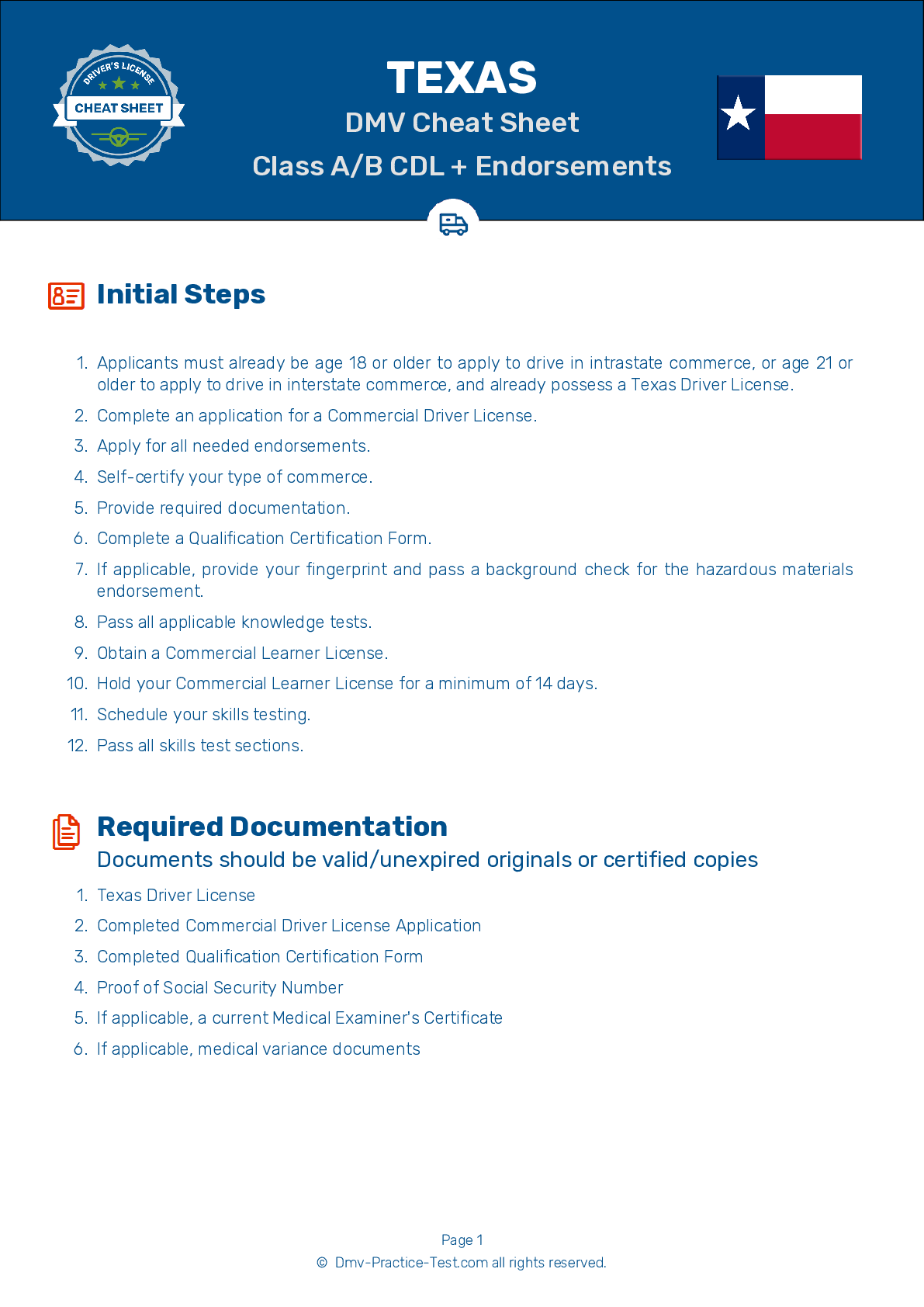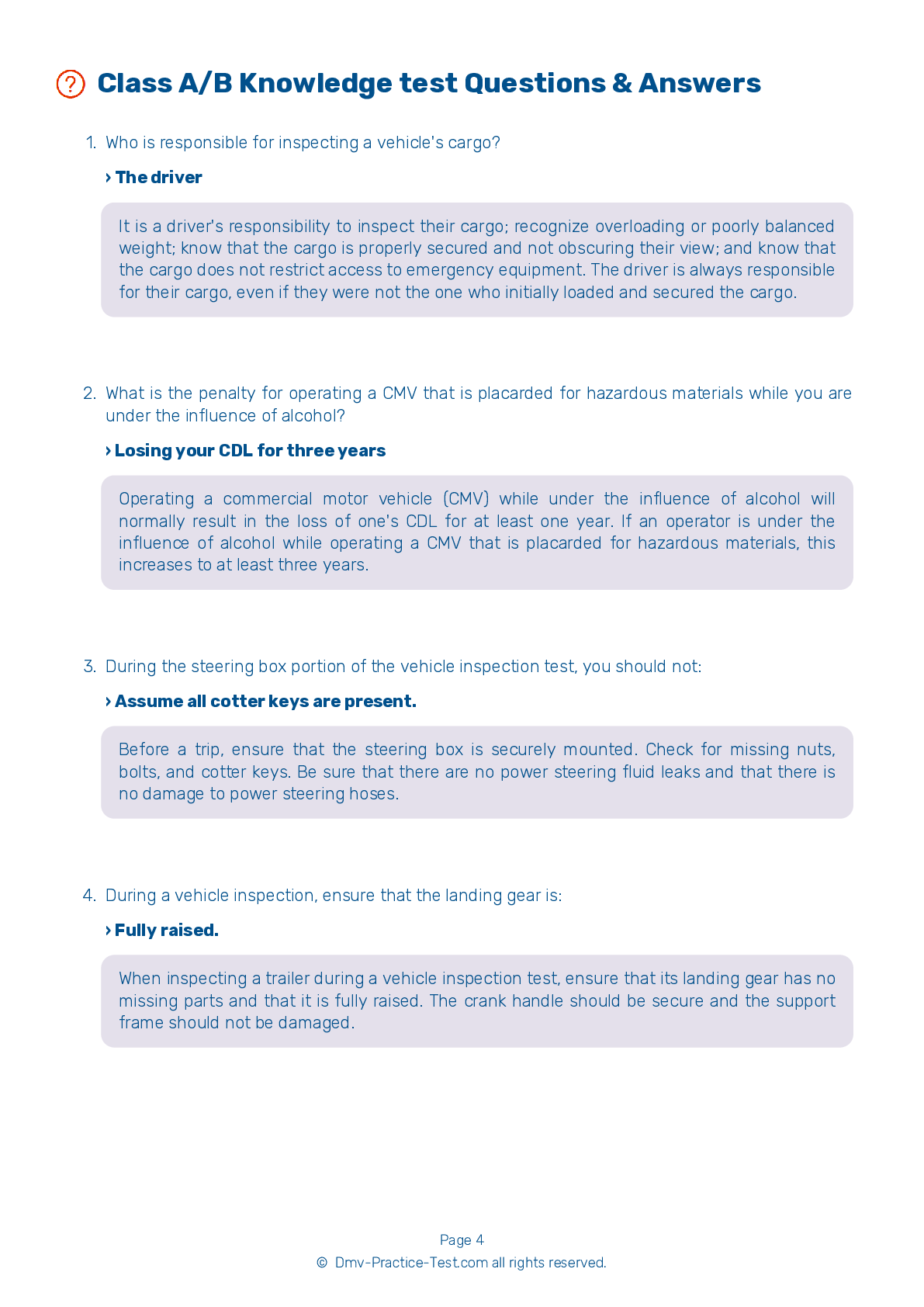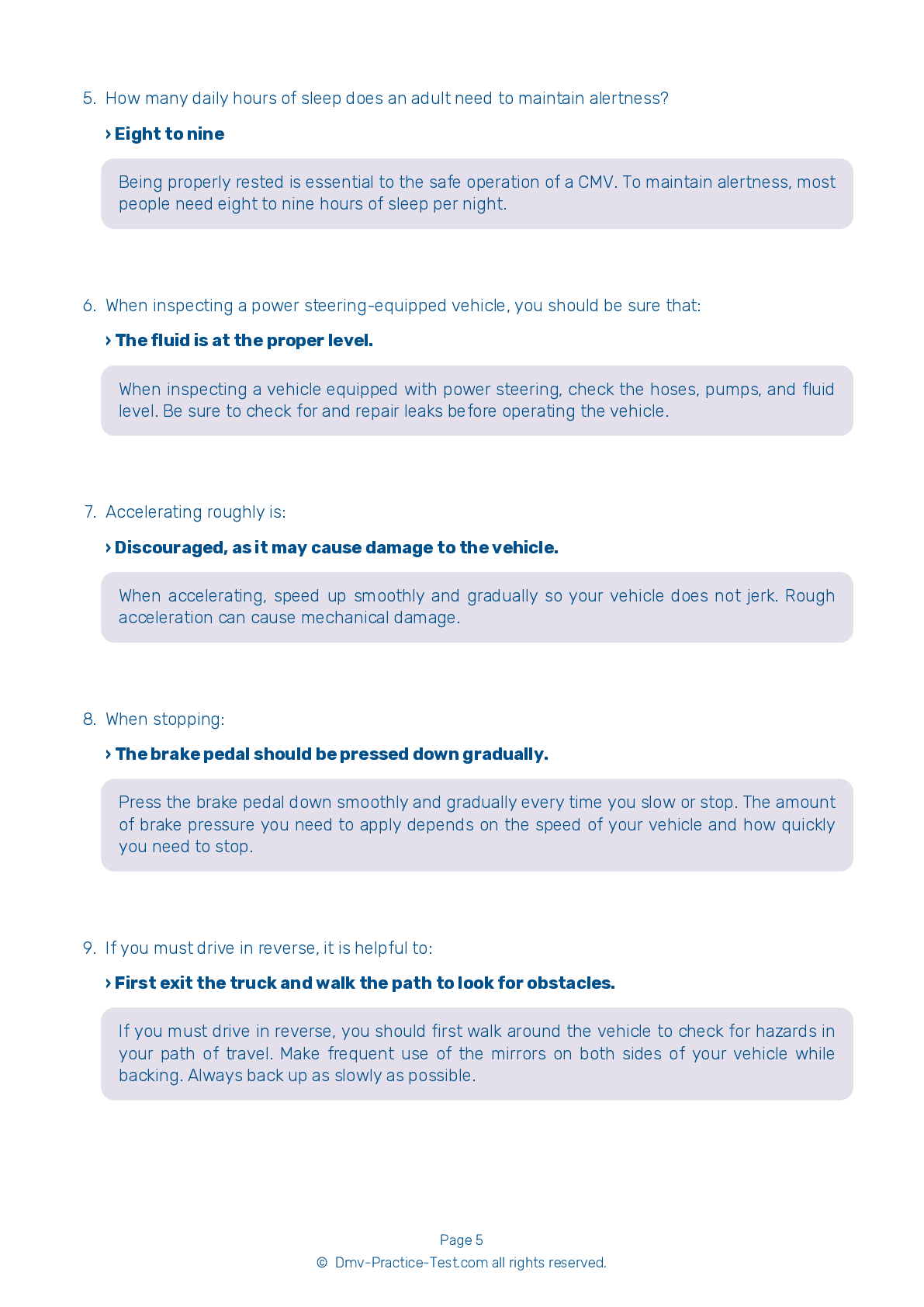Class B Driving Test | Texas 2025 #2 Page 4 of 7
Train for FREE online with our Texas class B license test. The official exam test consists of several obligatory parts, with all of them checking your knowledge of different blocks of road rules. If you need to obtain a TX CDL class B permit in 2025, practice as much as possible. Free sample tests published on our website will help you check and improve your knowledge and boost your grades. Please bear in mind that CDL class B requirements may vary from state to state.
22 . During the vehicle inspection test, you will be required to do all of the following, except:
As a part of earning your CDL, you will have to pass an inspection test and demonstrate that your vehicle is safe for operation. During the vehicle inspection test, you will have to walk around the vehicle and point to or touch each item and explain to the examiner what you are checking and why. You will not have to crawl under the hood or under the vehicle.
23 . When you press the brake pedal in a vehicle with S-cam brakes, air pressure pushes out the rod and moves the:
When pressing the brake pedal in a vehicle with S-cam brakes, air will enter the brake chambers. The added air pressure will push out the rods and move slack adjusters, twisting the brake camshafts.
24 . What happens if the air pressure in a system's air tanks falls below 60 psi?
In an air brake system, a low pressure warning signal should activate if the pressure in the air tanks falls to a level below 60 psi. This signal may be in the form of a warning light or a wig wag.
25 . If hydraulic brakes fail, a driver can reduce their speed by:
If your hydraulic bakes fail, shifting into a lower gear can help slow your vehicle down.
26 . When entering traffic on an expressway during the skills test, you should:
During the on-road driving skills test, you may be asked to enter an expressway. Before doing so, you must check traffic, use proper signals, and merge smoothly into the proper lane.
27 . When driving:
Using a phone while driving is a dangerous distraction. When operating a CMV, you are not allowed to read or send text messages.
28 . When parked on the side of the road, you should:
Always turn on your four-way emergency flashers if you must park on the side of the road. This is especially important when traveling at night.
See the exact questions that will be on the 2025 Texas DMV exam.
99.2% of people who use the cheat sheet pass the FIRST TIME
Lillian MCcranie explains how our CDL study guide was helpful in passing the exam and recommends it to everyone.
Cameron tells us how he purchased the CDL exam, and found it to be a useful tool which helped him pass the exam and find a job.



